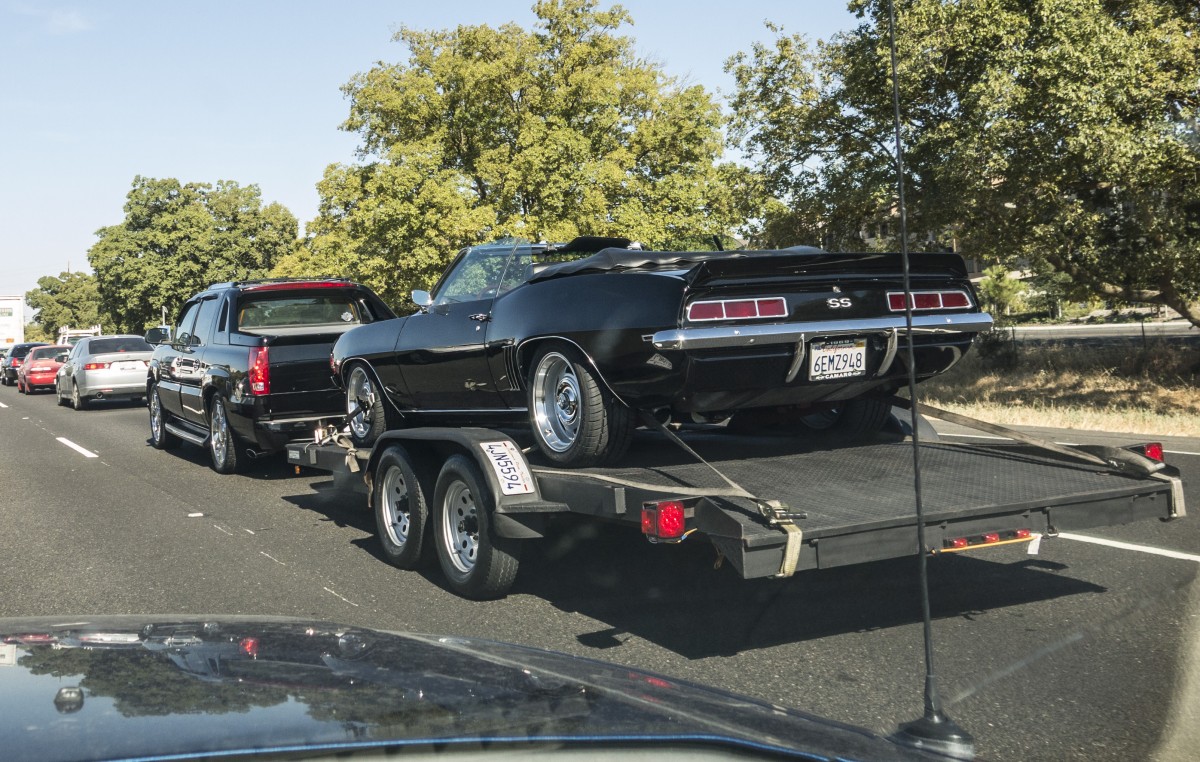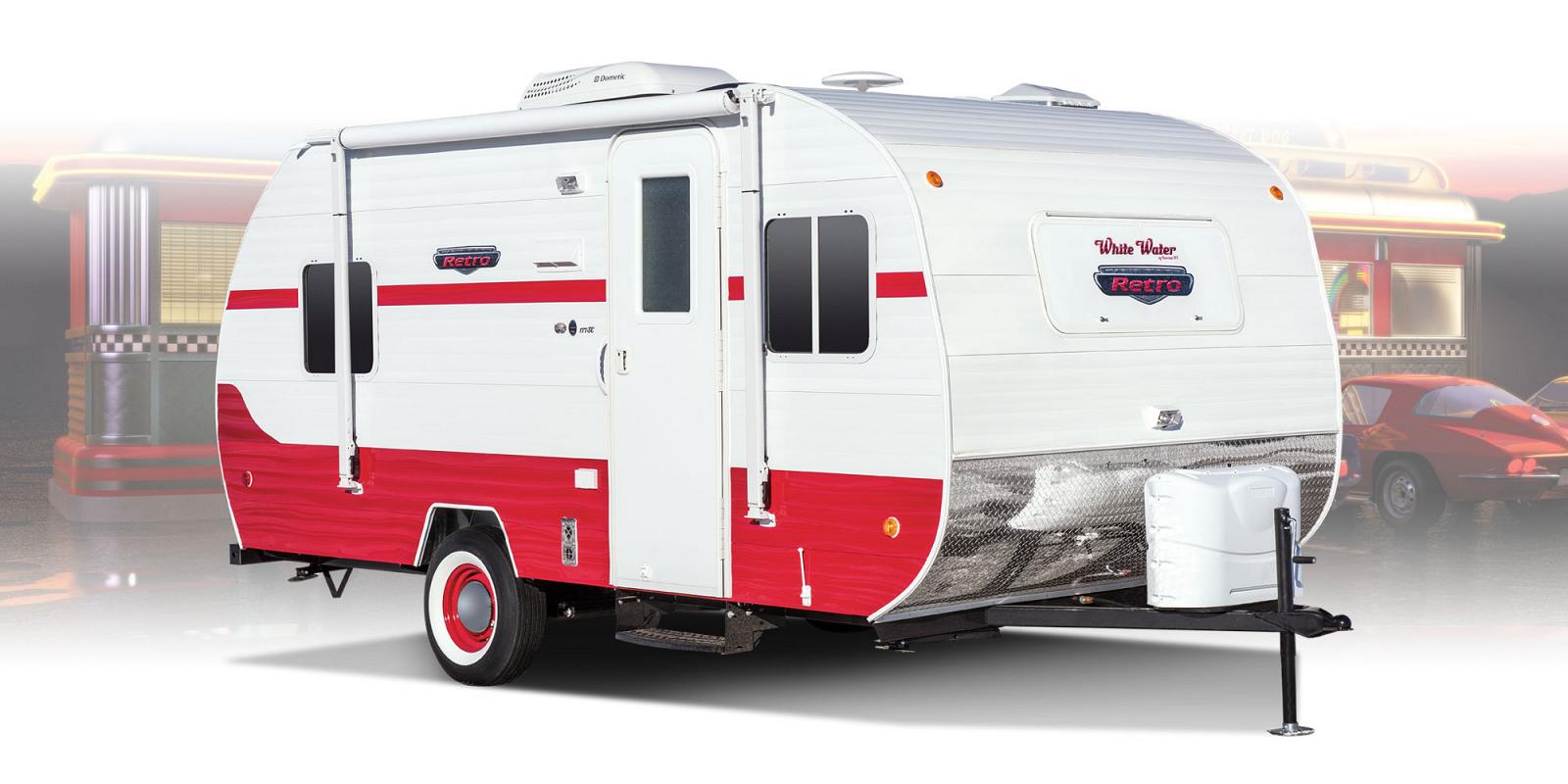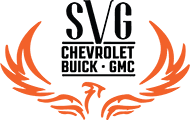Vehicle Financing Options
There are so many car financing options available how do you know which one is right for you? Read on to obtain information about all of the different options available and how to determine which one will provide you with the best benefits.
rn
rnMany people take advantage of an option known as dealer financing. This is when you handle the financing of your new vehicle directly through the lender. Now, that doesn’t necessarily mean you’ll be making your payments directly to the dealer. Usually, they work with a finance company to provide the financing to you. There are definitely some benefits to this option. First, depending on your situation you may be able to obtain extremely low interest rates; in some case you may be able to obtain a zero percent interest rate. In order to obtain this special rate; however, you will need to have excellent credit with no problems. If you have any problems at all on your credit history you will not qualify for the special interest rate although you will probably be able to still obtain a loan; just at a higher rate. When your credit report is not perfect ask yourself whether you could get a better deal at a bank.
rn
rnBank financing is an option that is typically available as long as your credit history is good. This means it doesn’t have to be perfect but you shouldn’t have any major flaws either. If you have already worked with the bank in the past this will increase your chances of obtaining a loan. While a bank interest rate may not be as low as what a car dealer can offer for individuals with excellent credit, it may be better than what you could obtain at the dealership if your credit is only ‘good.’
rn
rnAnother option you may wish to consider is credit union financing. Of course, this option is only available if you belong to a credit union. If you do happen to have a credit union membership; however, the rate available to you may be much better than what you can obtain through a bank or dealership.
rn
rnThese days it is also quite easy to simply go online and surf around for a quote from an online lender. This option has become so popular many lenders are now willing to compete with one another and offer very attractive rates. In the event you do not have perfect credit, this can be a good option for you; just make sure you fully understand all of the terms of the loan before accepting it.
rn
rnFinally, you may wish to consider refinancing your home or taking out a home equity loan in order to finance the cost of your new home. This basically allows you to pay cash for your vehicle with the proceeds of the loan and then paying back the money through the refi loan. In some cases you may be able to get a better interest rate with this route than you would with a traditional bank auto loan. In addition, the interest you pay on the loan is tax deductible. Like other options; however, there are some disadvantages. With this option, be aware that you could be putting your house at risk, not just your car, if you run into a problem and can’t make the payments in the future.
Black Ice – a Driving Disaster
As anyone in the transport industry knows, driving in poor weather can be anything from annoying to downright dangerous. The standard advice to stay off the roads unless your journey is absolutely necessary just doesn’t work for those doing courier work. Staying at home means not getting paid so it’s simply not an option.
rn
rnDriving on icy roads is a necessary evil, then. But that doesn’t mean it has to be dangerous. Follow these top tips and you should be able to complete your deliveries safely all year round.
rn
rnBlack Ice
rnBefore we get into our top tips, it’s worth focusing on the unique risks posed by black ice. Especially prominent on shaded areas such as in tunnels or under bridges, black ice is a very thin, very smooth, transparent layer covering the road surface.
rn
rnHow to spot black ice
rnThis is one of the biggest risks to winter road users as it can be almost impossible to see. Look out for any patches where light reflects off the asphalt. If you see other drivers swerving for no discernible reason, be aware: they may be avoiding patches of this nasty stuff.
rn
rnWhat to do if you get caught
rnBeing aware is ideal, of course, but you’re unlikely to be able to avoid black ice completely. If you do courier work are simply on the road too often, and at times without other vehicles to guide you. So you’re likely going to encounter this stuff at some point.
rn
rnThe most important tip is simple: don’t panic. Keep your wheels straight and maintain speed. Cycle down through gears to slow if necessary, avoid any sudden movement and keep control until you’re back on solid asphalt.
rn
rnBe Prepared
rnSo you’re about to head out on delivery, ready to keep an eye out for any suspicious reflective patches, but what should you bring with you to prepare?
rnThe most important thing to remember is that collisions, whether you’re involved or not, will often leave you waiting in the cold for a long time. It’s crucial that you bring the following items in case you get stranded:
rn• Extra clothes and blankets to keep warm. • A bottle of water and some snacks to keep hydrated and fed. • A charged phone and a portable charger to keep in contact.
rnThis last point is especially important for anyone doing courier work, where customers and the firm need to know your location.
rnYou should also invest in some snow chains or snow socks to cover your tires, if you drive in an area where heavy snow is at all likely.
rn
rnDriving on Ice
rnIt might sound like the latest TV dance competition, but it’s good to take these tips seriously before heading out on the road. Most importantly, stay aware. Stopping distances can be up to ten times longer on icy roads, and you’ll likely have worse grip on even clean roads in the cold. Keep your speed down and your eyes open. Next, you should stay calm. As mentioned, harsh braking and swerving are a big mistake. Instead, use higher gears to maintain engine power on packed ice and change down to reduce speed gradually. Finally, if you find yourself in a skid, don’t jerk the wheel away. Steer gently into the direction your rear is kicking out.
rn
rnFollowing these tips should keep you safe in cold conditions – and make sure you deliver on time, whatever the weather.
Need to ship your car? Here are some tips to follow
Whatever the reason, transporting your vehicle to the final destination rather than driving it over can save both money and time. Finding the right professional transporting company saves you a lot of sweat without the stress or hassle of doing it yourself. Auto transport is now made much easier than before. It can be done in a few simple steps as discussed further.
rnrn

rnShipment Listing
rnrn
A clear budget estimate has to be prepared first to successfully transport the car. Deciding on the right type of trailer or truck to load the car depends on the total weight, value, time, and exposure of the vehicle during transportation. Any special conditions for extra care have to be mentioned earlier. One of the main components in calculating the cost of car shipping is the distance involved. Also, taller and longer cars need additional adjustments and are more expensive.
rnrn
Two car transport alternatives are available such as enclosed or open. The enclosed option is ideal in the case of luxury vehicles and provides full protection during shipping. In the open transport, the car will be transported on an open or exposed trailer and costs less. If the car is running, loading onto the trailer becomes easier. Otherwise, it requires a winch and other equipment for loading onto the trailer, which increases the shipment cost.
rnrn
Get Multiple Quotes
rnrn
Once you fill in the vehicle data and your requirements in major professional websites, quotes from auto shipping companies come flooding in. You can share your concerns regarding their insurance, safety, and past experiences. You can also review the profiles of the shipping companies using feedbacks from past customers. Also, photos of the equipment and vehicle used for auto shipping will be shared by top-rated companies. Once you have negotiated the right quote, get the transport contract done.
rnrn
Shipping and Delivery
rnrn
The contact details of the shipping company will be provided once the best quote is approved. A direct meeting can be had with the transport company to discuss regarding pick-up, transport, and drop or any additional information required.
rnrn
Preparing Your Car for Transport
rnrn
Several steps have to be taken to ensure that the car is ready for transport.
rnrn
• Clean out the car exterior as well as interior.
rnrn
• Burn off most of the fuel. Do not leave more than a quarter tank of fuel.
rnrn
• Inspect the car fluids, battery charge, and tire pressure test.
rnrn
• Remove all accessories.
rnrn
• Make sure there is no personal property left behind.
rnrn
• Disable alarm systems, retract the antennae, and fold in the mirrors.
rnrn
• Take pictures of the shipment during pickup as well as drop.
rn
rnRegardless of why you need to ship your vehicle, following these tips will help ensure an easy, safe delivery!
Tips to Decrease Danger on the Road
Being involved in an accident on the road, whether it’s a small fender bender or something more serious, is a driver’s worst nightmare. Not only can it lead to injuries or discomfort, but you could also be looking at time off work and costly repairs. There are many ways to increase your personal safety on the roads, which will also ensure the well being of those around you. rn
A Helping Hand
rnrn
Developments in technology, such as Satellite Navigation, vehicle cameras and vehicle monitoring systems, can all assist you in keeping an eye on your surroundings and protecting yourself in case of an incident on the roads. Vehicle monitoring technology can identify service that needs to be performed before it can cause an issue. Vehicle cameras are particularly important in identifying the causes of an accident and can help to protect you from fraudulent claims.
rnrn
Avoid Complacency
rnrn
Just as drivers should avoid becoming complacent on the roads, you should ensure that you are always actively improving the safety of your vehicle. Here are some questions that you should be asking yourself regularly.
rnrn
• Is your vehicle well-maintained?
rnrn
• Are there any outstanding issues that need to be resolved (such as recalls)?
rnrn
• Do you refrain from texting or making phone calls while driving?
rnrn
We all know that safety on the roads is one of the most serious and most important issues in personal safety. Hopefully these tips motivate you to keep your vehicle in tip top condition and to ensure that you’re practicing safe driving habits.
rn
What to Consider When Buying an SUV
Are you part of growing family? Is child #1, #2 or even #3 on the way? Does your car need more room? Are you looking for a new vehicle to make room for new additions to the family? Well, there are some things to consider; because, like every major investment, thorough research and planning is fundamental in determining whether the vehicle you want will suit your needs.
rn
rnThe most common family friendly car these days is the SUV. SUVs aren’t just a popular choice for families, but also people who enjoy road trips, the great outdoors, four wheel driving and a thirst for adventure. If you’re in for one or a combination of these factors, perhaps a SUV is the right choice for you. But first – check out these five factors to consider when buying an SUV:
rn
rn1. Size Matters
rnThere are a range of compact, mid-size or large SUVs available in the market – the appropriate size depends on the size of your family and your intended use of the vehicle. Also, consider how much space you will regularly need in the boot, the number of seats or people the car can hold accordingly to your state’s automobile laws.
rn
rn2. Sports vs. Suburban
rnSuburban-UVs generally have good fuel efficiency, are often more comfortable and luxurious, and offer a smoother ride. On the other hand, while Sports-UVs are heavier, they are sturdier, can tow more and are designed for off-road adventures.
rn
rn3. Fuel Efficiency
rnDue their size and functionalities, SUVs tend to consume more fuel than a sedan or hatchback. Compact SUVs usually have four to six cylinder engines making them very fuel efficient; mid-size SUVs have six to eight; while large SUVs tend to consume more fuel than the more compact versions.
rn
rn4. Features
rnCommon, or extra, features available on most SUVs today include sunroofs, air-conditioning, built-in navigation systems, Bluetooth, keyless entry and start, parking sensors and rear camera, safety features, tinted windows, alloy wheels and touchscreen multimedia.
rn
rn5. Price
rnThe average price of an SUV in can range anywhere $20,000 to $100,000, depending on your budget, size, make and model preference, and feature requirements.
rn
rnOnce you’ve decided on the SUV that suits your needs the best, call one of our sales experts. Their job is to help you get the best value on your new (or new-to-you!) SUV.
rn
You’ve probably read that some cars have engines equipped with supercharger or turbocharger. This really is becoming standard for a lot of cars with smaller engines. Car manufacturers add superchargers and turbos to boost engine power without having to manufacture a completely new engine.
rn
rnBoth devices will raise the power of the car but there are several differences between how the boosters work.
rn
rnThe definition of a supercharger is "any device that compresses the environment being sent to an engine, allowing the combustion chamber to become overfilled without enlarging the area.” An engine can produce more power but “ingesting” more air, and that is the purpose of both a supercharger and turbo – to force more air into your engine. Both do this by utilizing a turbine. While both devices accomplish the same thing, they do it in different ways and each have their own pros and cons.
rn
rnThe turbine in the supercharger is driven (or spooled) by being attached to the motor via a drive belt. Less common are superchargers that use a chain or gear arrangement. A turbocharger uses exhaust gases to turn the turbine which compresses the incoming air. Both systems are made to compress the air making more oxygen accessible to the engine. The greater oxygen the engine takes in, the more power it may output.
rnSince the supercharger is powered straight from the engine, the power boost is immediate. Once your revs increase so does the power; this is simply not true for any turbocharger.
rn
rnA turbocharger requires exhaust gases to build before there is enough flow to power the turbine and compressor. Since a turbocharger experiences a momentary delay before delivering a power boost, this symptom is called “turbo lag”. Newer turbos have an improved design reducing the lag however there is still a delay compared to a supercharger.
rn
rnWhether your car is outfitted with a supercharger or turbo, your engine will ultimately use more gas with the increased power output.
rn
rnA turbocharger is usually considered more environmentally efficient when compared to a supercharger as they utilize the "wasted" energy from the exhaust gases. Turbos work best when the engine is at a high RPM.
rnThe benefit to a supercharger is that there is no lag. The benefit to a turbo is that if you’re considering installing an aftermarket unit, it will cost considerably less than a supercharger.
rn
rnWhether you decide a supercharger or turbo on your next vehicle, SVG Motors has such a large inventory they’ll be able to find a vehicle with the exact option you want.
Tips to Help Avoid Vehicle Break-Ins
Car vandalism is a common crime and any car owner can become a victim of it. If you leave your car unattended for even a few minutes, a thief could try to break in and rob you of your valuables. Car break-ins are hard to stop but there are ways through which they can be prevented.
rn
rnDon’t Leave Valuables in the Car
rn
rnThe easiest way of ensuring that you don’t lose any valuable stuff like your purse, laptop or iPod is to not leave them in the car when you get out. Make sure that the thief doesn’t have any valuables to steal even if he breaks into the car.
rn
rnKeep the Car Clean
rn
rnDon’t leave any bags or boxes lying around on the seats or dashboard of the car even if they don’t contain anything valuable. Thieves consider bags to contain valuables and won’t think twice before breaking your window glass if they see them present inside the car.
rn
rnInstall a Detachable Stereo Face
rn
rnCar stereos are very high on the list of items that car thieves love to smash and grab from parked vehicles. To prevent your car stereo from being stolen, installing a detachable stereo face is a good idea as it will fool the thief into thinking that the stereo is out of order.
rn
rnPark the Car in Public Spaces
rn
rnSecluded and private parking spots are targeted the most by car thieves. These criminals don’t like attention and thus go after cars which are parked outside of the public eye. Thus, parking in public spaces can keep your car safe from being vandalized.
rn
rnInvest in a Car Alarm
rn
rnCar alarms are noisy and can go off sometimes for no reason at all. However, there is no denying that they can deter car thieves very effectively. Even a car alarm that is only there for show can keep the car thieves from targeting your car.
rn
rnKeep Your Car Locked
rn
rnThis is a no-brainer, really. You must always lock the car doors and keep the windows up when leaving the car. This will make the thieves work to steal anything from the car which might compel them to leave your car and look for an easier target.
rn
rnCar break-ins can result in considerable car damage. The car windows can get smashed irrespective of whether something is stolen or not. If you are a victim of car vandalism, you must assess the damage and then call the police. It is wise to cancel any stolen cards too.
rn
Riverside Retro RVs are here!
SVG Motors in Beavercreek is now offering the coolest new campers ready to make your travels not only affordable, but exceptionally fun!
rn
rnThe Retro RVs feature a fabulous 1950's look paired with modern amenities. Making these campers even more attractive is the fact that they're super light weight and can be towed by vehicles as small as a Toyota Camry. Just about everyone can afford these sleek campers, too, with prices starting at $18,000 with available 15 year financing.
rn
rnThe Retro RVs feature 11 different floor plans to meet the needs of nearly any camper. According to the Retro RVs website, "Traveling never looked so good. Sleek lines and curves, colors that punch, and fantastic features – get your travel vibe on, and bring some friends along too. Make your next trip as unforgettable as the Retro lightweight rv. You’ll want to get back to your travels again and again."
rn
rnTo see a preview of these gorgeous campers, click here, then stop out to the new SVG Beavercreek location to get a personalized tour!
rn
rn
Do you need winter tires?
Do you need winter tires?
rnrn
With the Buy-2-Get-2 FREE tire deal at SVG Motors, it’s finally affordable to get those new tires you need. With the colder months creeping up on us very soon, many customers have been asking if they need winter tires. This blog post will help you explore what winter tires about so you can decide if you need them.
rnrn
First, it’s important to distinguish between snow/winter tires and all-season tires. All-season tires are designed to give adequate traction in rain, snow, and dry/hot climates. Despite the fact that they can be used in cold, snowy weather, they don’t have the same features that winter tires do. Winter tires have a rugged tread pattern and use a softer rubber compound. By being more pliable, soft compound tires can grab the snow and throw it off of the tire as it rotates. The knobby tread provides better traction, improved cornering, and improved braking power.
rnrn
The benefit of having winter tires is that you’ll have much better control of your vehicle in snow and ice. This can help reduce the likelihood of weather-related accidents. However, winter tires are not appropriate for use during temperate months, so you’ll need to switch back to different tires in the spring. This means you’ll have the cost of maintaining two sets of tires for your vehicle along with the cost of mounting and balancing each set of tires when the season changes.
rnrn
The question then becomes, “is the cost worth it?” According to most industry experts, the answer is YES if temperatures are normally below 45 degrees F for several months in a row. Winter tires aren’t just designed for snow; they’re also designed for cold roads and ice. If they can help you stop several feet sooner than all-season tires and you avoid plowing into an obstacle, and your insurance deductible is $500, you just saved yourself the cost of the tires by not making an insurance claim.
rnrn
If you aren’t sure whether you’d benefit from having a set of winter tires, feel free to call our friendly technicians at SVG Motors. They’ll be happy to help you figure out whether or not you’ll need winter tires.
rn
Decoding the numbers on your tires
Decoding the numbers on your tires
rnrn
rnrn
At SVG, when you buy 2 tires, you get 2 free! No joke! When you pay for your first two tires plus alignment, mount and balance fees, you’ll get 2 tires free. When you make an appointment to have the new tires installed, you’ll need to know what size tire you want to replace. While our helpful technicians can certainly figure this out for you, it’s always a good idea to know what tire size you need ahead of time. Here, we unravel the mystery of the numbers stamped onto tires so you know exactly what you have and need.
rnrn
rnrn
If you look at the sidewall of your tires, you’ll see they have a number series on them. Typically, they’ll be displayed like this:
rnrn
rnrn
205/55 R 16 91W
rnrn
rnrn
Understanding what these numbers mean can not only help you when you need new tires, but in the event you’re experiencing issues due to your tires (spinning under hard acceleration, premature wear, etc.) you may be able to determine that you’ve got the wrong tires for your needs.
rnrn
rnrn
The first number in the series (in our example, 205) is the tire width. It’s also called the “patch” or tread. This is the area of the tire that comes into contact with the road. On most high performance vehicles, the patch or width will be significantly larger than an average vehicle. Usually, the width is measured in millimeters, so a 205 width is 205 mm wide.
rnrn
rnrn
The next number (in our example, 55) is the tire’s profile, or sidewall height. This number represents a percentage of the tire’s width. The number 55 in our example means the height is 55% of the tire’s width. Using math we can see that the tire’s profile is then 112.75 mm tall.
rnrn
rnrn
The letter “R” denotes the tire construction or type. In this case, the R represents “radial” which is the most common type.
rnrn
rnrn
Next we find the number 16. This is the wheel’s diameter.
rnrn
rnrn
Finally, we see 91W. These denote the tire’s load and speed ratings. If you’re trailering, towing or hauling, you’ll need a tire with a hefty load rating. Likewise, if you have a performance vehicle designed for quick acceleration and high speeds, you’ll need a more substantial speed rating.
rnrn
rnrn
Hopefully these tips can help you decide what type of tires you need on your vehicle so when you come to SVG for your two free tires, you’ll be able to speak to the technicians like a pro! Ready to take advantage of the Buy 2 Get 2 Deal? It’s easy, you can schedule an appointment right here.
rnrn
rnrn
rn










